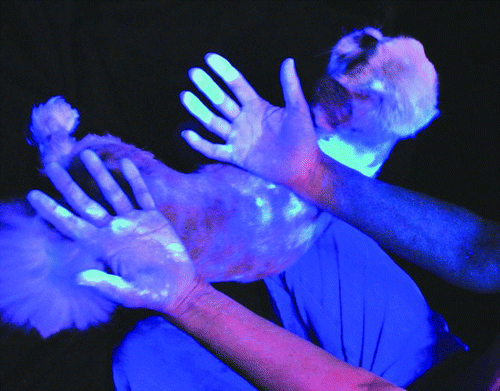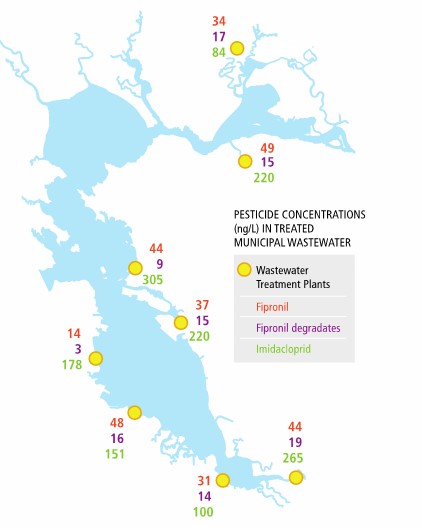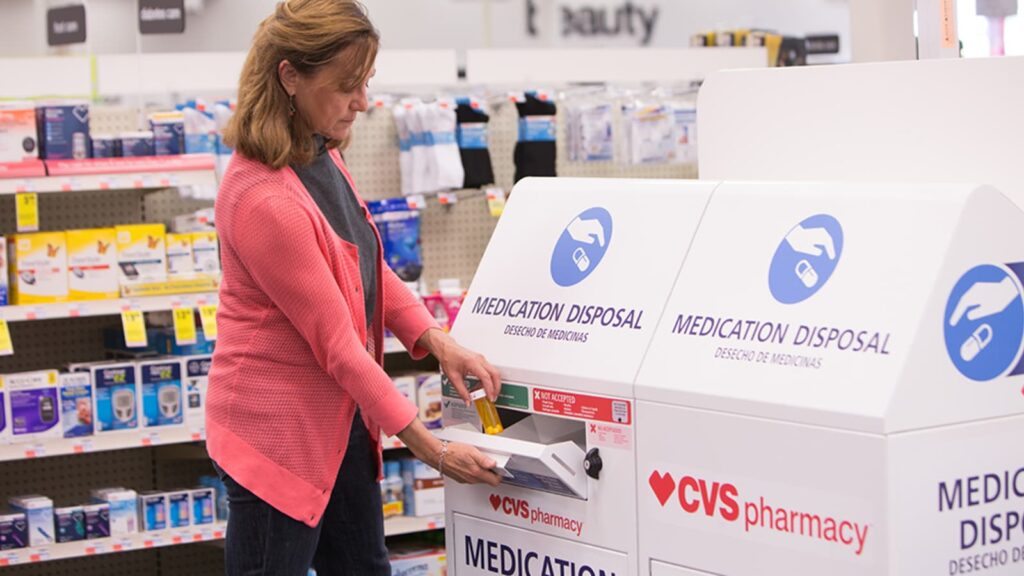Topical Flea & Tick Control Products Expose Pet Owners to Toxic Chemicals and Pollute San Francisco Bay
Vets are their clients’ trusted source for flea and tick control information. The veterinary community can help educate Bay Area pet owners about the efficacy and benefits of systemically-acting pet flea and tick medications which also reduce pesticide exposures to people and the San Francisco Bay.

Scientific studies have examined the fate of indoor pesticides used for flea and tick control (including spot-on treatments, collars, sprays, and foggers). The findings indicate that these pesticides are transferred onto human hands, clothing, bedding, and other indoor surfaces. This pesticide transport exposes people to toxic pesticides and, upon washing, results in the discharge of pesticides into the sewer system.[1,2,3,4,5] Wastewater treatment processes are not designed to remove pesticides and therefore common active ingredients in flea and tick products are discharged into the San Francisco Bay. Pesticides of concern are those that exhibit aquatic toxicity and persist in the environment:
- Fipronil
- Imidacloprid
- Indoxacarb
- Many pyrethroids, including bifenthrin, cypermethrin, deltamethrin, and permethrin
What the Research Shows
Oral medications may be more effective than topical spot-on treatments, and they reduce pet owner exposure to toxic chemicals.[6,7]
For instance, orally administered fluralaner is excreted in the feces, rather than via the hair and skin, so is less likely to be associated with dermal or oral contact with people as well as have fewer transport mechanisms to the environment.[8] In addition, some systemically-acting medications treat endo-parasites such as hookworms, roundworms, and heartworms.
Indoor uses of fipronil, including sprays and topicals, pose a potential health risk to adults and children.

The California Department of Pesticide Regulation (DPR) conducted a human health risk characterization for fipronil, the active ingredient in many topicals and indoor on-pet and carpet sprays, and found post-application residential exposure that posed a potential health risk for adults and children. [9,10]
Contrary to manufacturer labels, spot-on products DO wash off during bathing.
A DPR study[11] measured the residue of fipronil spot-on products in baths for treated dogs. Fipronil was detected in all samples up to 28 days after application. Results from another DPR study indicate that concentrations of pet treatment pesticides are far greater in wastewater from a pet-grooming site versus concentrations measured from an average sewer collection system.[12]
Wastewater effluent that is discharged to San Francisco Bay contains flea treatment products in concentrations above toxicity thresholds for aquatic species.

A study conducted by the San Francisco Bay Regional Monitoring Program monitored imidacloprid and fipronil, as well as fipronil degradates, in the influent and effluent of eight urban California treatment facilities. The graphic presented here is from that study.[13] It shows that the final treated effluent of all eight systems exceeded the toxicity thresholds for aquatic invertebrates (11 ng/L for fipronil and 10 ng/L for imidacloprid) thereby compromising water quality.
Indoor flea and tick control are the overwhelming source of fipronil, imidacloprid and indoxacarb to wastewater treatment plants.
Fipronil is registered in the US for the following indoor uses: fleas and ticks, a subsurface termiticide, and as a crack and crevice insecticide.[14] Of these uses, the indoor sprays and topicals for fleas and ticks are more likely to be transported to the sewer than either the subsurface termiticide or the crack and crevice insecticide.
Imidacloprid is registered for on-pet uses (spot-on treatment and collars), indoor areas for bed bugs and crack-and-crevice treatments, as well as a pre- and post-construction termiticide and wood preservative.[15] Of these additional indoor uses, the bed bug control is the next most likely use to be transported to the sewer. However, bed bug control is likely used in a periodic manner and not throughout a residential community in a routine prophylactic manner parallel to topical flea control.
Indoxacarb indoor uses include spot-on treatments of cats and dogs, bait products for ants, cockroaches, and crickets, and crack and-crevice uses.[16] Baits are contained uses of pesticides and therefore unlikely to be readily transported to the sewer. And similar to the fipronil crack and crevice uses, these indoxacarb uses are less likely to be transported to the sewer.
While outdoor uses of pesticides are transported directly into surface waters without treatment, this occurs during episodic rain events, while sewage discharges occur continuously and therefore likely a more significant source to the environment.
In most of California (except for downtown San Francisco and Sacramento), outdoor urban runoff flows through separate storm drain systems that discharge directly to creeks without any treatment. Consequently, runoff flows can wash residues from outdoor fipronil and imidacloprid applications directly into surface waters. Monitoring data compiled and analyzed by DPR for both fipronil and imidacloprid in urban runoff and creeks found urban runoff fipronil concentrations are similar to fipronil concentrations in treated municipal wastewater effluent, while imidacloprid and indoxacarb concentrations are generally lower. [17,18,19] Unlike rain runoff, sewage discharges occur continuously, resulting in indoor pet flea control uses to have the potential to be a more ecologically significant source of these pesticides than urban runoff.
Resources
References
- Litchfield et al., “Safety Evaluation of Permethrin and Indoxacarb in Dogs Topically Exposed to Activyl® Tick Plus,” J Veterinary Sci Technology 2015, 6:2 http://dx.doi.org/10.4172/2157-7579.1000218.
- Bigelow Dyk, M., et al. (2012) Fate and distribution of fipronil on companion animals and in their indoor residences following spot-on flea treatments, Journal of Environmental Science and Health, Part B: Pesticides, Food Contaminants, and Agricultural Wastes, 47(10): 913-924. https://doi.org/10.1080/03601234.2012.706548
- Keenan, James J., John H. Ross, Vincent Sell, Helen M. Vega, Robert I. Krieger, “Deposition and spatial distribution of insecticides following fogger, perimeter sprays, spot sprays, and crack-and-crevice applications for treatment and control of indoor pests,” Regulatory Toxicology and Pharmacology 58 (2010) 189–195.
- Ross, J., T. Thongsinthusak, H.R. Fong, S. Margetich, R. Krieger, California Department of Food and Agriculture, “Measuring Potential Dermal Transfer of Surface Pesticide Residue Generated from Indoor Fogger Use: An Interim Report,” Chemosphere, Vol.20, Nos.3/4, pp 349-360, 1990.
- “Assessing Intermittent Pesticide Exposure From Flea Control Collars Containing the Organophosphorus Insecticide Tetrachlorvinphos,” Davis, M., et al., J. of Exposure Science and Environ. Epidemiology, 2008, Vol. 18, pp 564-570.
- “Flea blood feeding patterns in cats treated with oral nitenpyram and the topical insecticides imidacloprid, fipronil and selamectin,” McCoy, c., et al., Veterinary Parasitology, Vol. 156, pp 293-301, 2008.
- Assessment of owner-administered monthly treatments with oral spinosad or topical spot-on fipronil/(S)-methoprene in controlling fleas and associated pruritus in dogs, Dryden et al, Veterinary Parasitology 191 (2013) 340– 346.
- Perkins et al., Potential role of veterinary flea products in widespread pesticide contamination of English rivers, Science of the Total Environment 755 (2021) 143560.
- All DPR fipronil risk assessment documents are available at http://www.cdpr.ca.gov/docs/whs/active_ingredient/fipronil.htm
- Fipronil Risk Characterization Document, Human Health Assessment Branch, Department of Pesticide Regulation, California Environmental Protection Agency. March 2023. https://www.cdpr.ca.gov/docs/risk/rcd/fipronil_rcd.pdf
- Teerlink, J., J Hernandez, R Budd. 2017. Fipronil washoff to municipal wastewater from dogs treated with spot-on products. Sci Total Environ 599-600: 960-966.
- https://www.cdpr.ca.gov/docs/emon/surfwtr/presentations/presentation_155_wastewater_flea_tick_topical_waters.pdf
- Sadaria, A.M., Sutton, R., Moran, K.D., Teerlink, J., Brown, J.V., Halden, R.U., 2017. Passage of fiproles and imidacloprid from urban pest control uses through wastewater treatment plants in northern California, USA. Environ. Toxicol. Chem. 36:6 1473-1482.
- Fipronil: Draft Risk Assessment for Registration Review, US EPA, March 2020.
- Imidacloprid: Updated Residential Exposure Assessment, US EPA, February 2019.
- Indoxacarb: Proposed Interim Registration Review Decision, US EPA, June 2018.
- Budd R., Ensminger M., Wang D., Goh K., 2015. Monitoring Fipronil and Degradates in California Surface Waters, 2008–2013. J. Env. Qual. 44(4):1233-40
- Ensminger M., Budd R., Burant A., Wang D., Singhasemanon, N. 2018. “Imidacloprid Monitoring in Urban Surface Waters of California, USA,” Presentation at the SETAC North America 39th Annual Meeting, Sacramento CA. Available online at this link.19Ensminger M.P., Budd R., Kelley K.C., Goh K.S. 2013. Pesticide occurrence and aquatic benchmark exceedances in urban surface waters and sediments in three urban areas of California, USA, 2008–2011. Environ. Monit. Assess. 185:3697–3710
1- Litchfield et al., “Safety Evaluation of Permethrin and Indoxacarb in Dogs Topically Exposed to Activyl® Tick Plus,” J Veterinary Sci Technology 2015, 6:2 http://dx.doi.org/10.4172/2157-7579.1000218.






